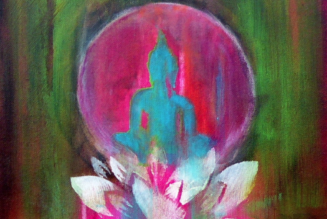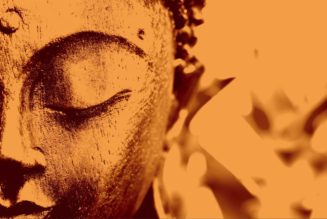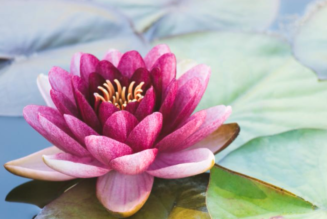WHAT IS BALANCE?
The word balance brings about a mental image of equilibrium to both the mind and body. It often reflects a middle path in any aspect of life and relates to a feeling of calmness and steadiness. Balance means to come into our center and being able to function from that center, in each moment. It follows naturally that a well balanced person reflects excellence in health. It is thought that every human being (with exceptions) is born with an optimal blue print aligned with universal principles. However, as we continue the process of development, several factors influence us and may take us away from a balanced alignment [i.e. wrong diet, lifestyle, relationships, trauma, abuse, accidents and past karma].
NATURAL TENDENCY TOWARDS BALANCE:
We, as human beings, are constantly looking for balance, consciously or unconsciously.
1. If it’s cold, we wear warm clothes … if it’s hot, we wear less.
2. If we’re hungry we only think of food … if full, we naturally decline food.
3. If we have not slept, we desire to sleep … if overslept often we feel a sense of dullness.
4. Too much time together one seeks space …. if lonely, a person longs to fill that space.
5. Too much work, a feeling of exhaustion … if no work, one may develop a dull and idle mind.
BALANCE ~ A YOGA PERSPECTIVE:
In yoga, when we think of balance, we think of standing on one leg or doing arm balancing poses. Yes, trying to stay steadily balanced on one limb in a yoga asana has multiple benefits. It strengthens, increases concentration, and gives intense focus. Lack of equilibrium brings just the opposite. When one falls or looses balance, besides bringing frustration it can also strike the ego. Standing on one foot instills a deep sense of calmness even though it requires unwavering alertness.
Alignment, Strength, and Attention:
The three essential elements of balance in yoga are alignment, strength, and attention. Alignment of the body with gravity is crucial as it makes balance physically possible. Strength gives us the power to create, hold, and adjust alignment. Finally, attention continually monitors alignment knowing how to correct from one moment to the next.
Balance ~ A Meditative State of Mind:
Balance is moment to moment. The effort to remain centered not only brings balance to the body but also our nerve impulses, thoughts, feelings, emotions, and consciousness itself. Where there is calmness there is equilibrium. Equilibrium brings about a state of equanimity. Balance cannot be restricted to only standing on one leg or holding the body upside down. Rather, balance involves a deeper sense of distribution of weight throughout the body. When we walk, there is a always a sense of balance involved. However, if that sense of balance is off-centered it can result in twisting of the ankle or having a fall. While walking, foot placement is often automatic and unconscious. However, if attention is paid to each step it easily can become a meditative state of the mind. Even the way we stand should have a center of balance. To stand evenly on both feet brings about a lightness to the body. Hence the appropriate proverb, “Stand on your own two feet!”
“Sama Dosha Sama Agnischa Sama Dhatu Mala Kriya
Prasanna Aatma Indriya Manaha Swastha Iti Abhidheeyate”
– Sushruta sutra sthana, 15/41
BALANCE ~ AN AYURVEDA PERSPECTIVE:
The sanskrit definition (above) in ayurveda integrates all aspects of life giving us a complete picture of physical, mental and spiritual health.
PHYSICAL HEALTH:
Sama Dosha:
The doshas (vata, pitta, kapha) are biological energies found throughout the human body and mind. They govern all physical and mental processes and provide every living being with an individual blueprint for health and fulfillment. The doshas are derived from the Five Elements and their related properties. Vata is composed of Space and Air, Pitta of Fire and Water, and Kapha of Earth and Water. These three must exist in their normal range, display their normal characteristics and perform their normal functions.
Sama Agni:
Agni or the “digestive fire,” is one of the most important principles in the ancient science of ayurveda. It refers broadly to our ability to process all aspects of life, including food, experiences, memories, and sensory impressions. Agni is responsible for absorbing the nutrients and essential elements the body needs while burning off waste products. (agni is the root of the English word “ignite”). If our agni is strong, we’re able to digest food efficiently and easily assimilate our daily experiences. On the other hand, if agni is weak, our body won’t digest well, creating toxic residue or ama that lodges deep in our cells.
Sama Dhatu:
The seven dhatus are the tissue structures of the body, which are constantly being built up and broken down.
– Plasma (Rasa)
– Blood (Rakta)
– Muscle (Mamsa)
– Fat (Meda)
– Bone (Asthi)
– Bone marrow and nerve( Majja)
– Reproductive fluid (Shukra)
Sama Mala:
Malas are the various waste products produced during the normal metabolic processes. The three primary malas being Purisa (faeces), Mutra (urine) and Sweda (sweat). Ayurveda clearly states that only a balanced condition of doshas, dhatus, and malas is arogya (good health or disease-free condition) and their imbalance is the cause of ill health.
MENTAL HEALTH:
Prasanna Indriya:
The Indriyas are the five senses (sight, smell, taste, hearing, touch). Each one should be capable of identifying its respective objects clearly and correctly. Each of the senses should be used properly – neither too little, nor excessively, nor in an inappropriate manner.
Prasanna Mana:
The Manas, or mind, should be balanced, calm and satisfied.
SPIRITUAL HEALTH:
Prasanna Atma:
The Atma, or soul, is that which is separate from the physical body, yet responsible for its actions. It stresses the importance of each individual recognizing right from wrong, and acting upon that at the proper time. It can also include introspection, seeking and understanding that each person ultimately seeks.
Conclusion:
During the course of each day, we are all faced with situations old and new, which may take us away from feeling ‘centered’. A nice simple practice that I would like to share with all is …
Sit for a few moments even in the midst of turbulence and bring your focus to your natural breath and observe it for a few moments (your eyes can stay open). Next, focus inside your chest and feel ‘yourself’ inside of you. It will gently bring a shift into your awareness and reflect upon your nervous system. The mind will begin to develop calmness as you enter into your center of being. Decisions made from one’s center are connected to the Highest Truth. This is a practice to be practiced daily. The more it is practiced, the easier it becomes to stay in balance. Balance is a constant effort. However, when one is balanced, there is no effort in being.



![Prajnaparadha [Crime Against Wisdom] ~ An Ayurvedic Perspective](https://healthyayurveda.com/wp-content/uploads/2015/07/Screen-Shot-2015-07-18-at-6.41.22-PM-327x219.png)



